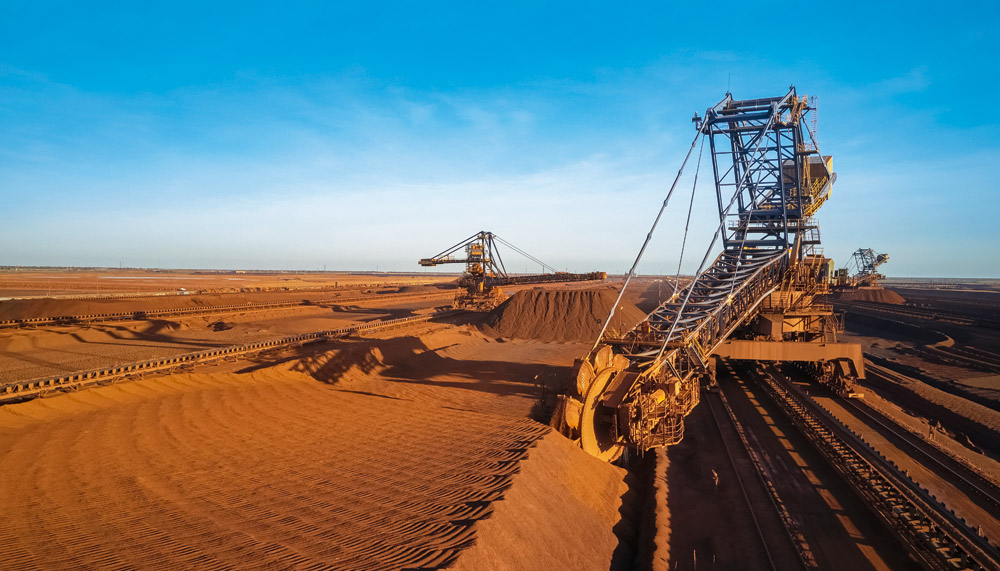After a challenging year, Australia’s $470 billion annual export program continues unabashed, with ingenuity, adaptability, strength and resilience.
Story Ken Eastwood Photo FMG
Red dirt meets aquamarine at Port Hedland in the Pilbara, where Captain Campbell ‘Cam’ Griffiths has just finished piloting a monstrous ship heading to China, loaded with more than 200,000 tonnes of Australian iron ore. About 300m long and 50m wide, the ship – with Cam at the helm – had to stick to a channel just 182m wide for 24 nautical miles to avoid grounding, with as little as 25cm of water at times under the keel, and with the ticking time bomb of a falling 7m tide. In a single high tide there can be up to nine vessels in the channel out of Port Hedland, moving a total of 538 million tonnes of iron ore and other cargo a year, making it the port with the most export cargo in the world.
“It’s a place where records are broken regularly,” Cam says. “It’s one of the most challenging environments to work in anywhere. Everything is big. The ships are big, the tugs are big, the tides are big, and it’s not unusual to move more than a million tonnes of cargo in one tidal window.”
As well as being a pilot himself, Cam is the managing director of Port Hedland pilots, an internationally recognised group of 28 professionals who, after having fine careers elsewhere as captains on cruise vessels or container ships, come to Port Hedland to perform an additional 1000 jobs under watch until they are considered qualified to work in this environment. Using choppers to get on or off the vessels, they work around the clock, 365 days a year, in nearly all conditions, dealing with occasional blackouts, rudder locks and engine failures, often working with skippers and crews for whom English isn’t their first language. “The pilot has very little time to react to emergencies – about 20 seconds to make a positive decision to prevent a grounding,” Cam says. “These ships are up to 340m long and 60m wide. These are two MCGs stacked together, or longer than the tallest building in Australia. They don’t like to stop in a hurry. And you berth them in some cases as close as 15m from each other. So, you’re parallel parking a 300m ship into that space.”
Around the country, pilots like Cam are just one of the vital links in the many supply chains that see $470 billion worth of goods and services leave our shores in a year, representing 1.3% of world exports. We may only be the 23rd largest exporter in the world, but we are big hitters for our size, being the number-one exporter in key commodities such as iron ore, coal, liquified natural gas and wool, and in the top three for beef, lentils and aluminium ore. And that’s just for starters.
This story excerpt is from Issue #135
Outback Magazine: Feb/Mar 2021









